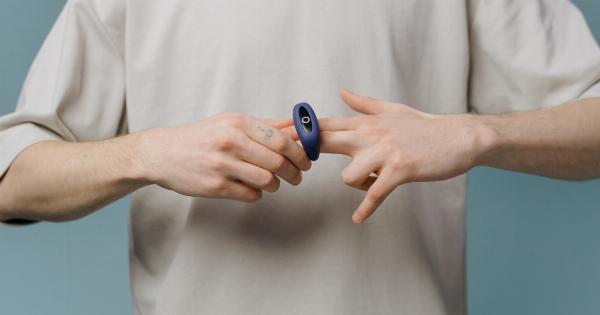Introduction
In today’s world of dating, it’s not uncommon for individuals to hide their partners from family and friends. This phenomenon, known as “stashing,” can lead to feelings of insecurity, doubt, and confusion.
If you suspect that your partner may be stashing you, it’s essential to understand the signs and take appropriate action. In this article, we will shed light on the truth about stashing and guide you on how to tell if your partner is hiding you.
What is Stashing?
Stashing refers to the act of hiding a romantic partner from family, friends, and even social media.
While it’s natural for some individuals to keep their relationships private initially, stashing becomes problematic when it continues for an extended period without any legitimate reason. Being stashed can make you feel like a secret and may indicate that your partner is not fully committed to the relationship.
Signs That You’re Being Stashed
While stashing is not always easy to detect, there are several red flags that may indicate you’re being hidden by your partner. Here are ten signs to watch out for:.
- Lack of introduction: Your partner avoids introducing you to their family and friends, despite dating for a significant period.
- Avoiding public outings: Your partner consistently cancels plans to attend events or gatherings where they would have to introduce you as their partner.
- Secretive phone behavior: Your partner becomes overly protective of their phone, guarding it closely and often taking phone calls or texts outside of your presence.
- No social media presence: Your partner refuses to acknowledge your relationship on social media or keeps their profiles hidden from your view.
- Avoiding commitment: Your partner seems hesitant or resistant to discuss the future or committing to long-term plans with you.
- Evasive conversations: Your partner uses vague language when discussing your relationship with others, actively avoiding mentioning you as their partner.
- Limiting public displays of affection (PDA): Your partner refrains from showing any physical affection in public, avoiding holding hands, hugging, or kissing.
- Exclusion from important events: Your partner attends weddings, parties, or significant family gatherings alone, without any valid reasons for leaving you out.
- Avoiding meeting your loved ones: Your partner makes excuses or finds reasons to avoid meeting your family and friends, even when you express a genuine desire for introductions.
- Gut feelings: Your instincts tell you that something is off in the relationship, and you feel like you’re being hidden intentionally.
Why Do People Stash?
Understanding why someone might engage in stashing can provide insights into their motivations and potential relationship issues. While every individual and relationship is unique, some common reasons people stash their partners include:.
- Fear of commitment: Some individuals may be afraid of fully committing to a relationship due to past experiences, attachment issues, or fear of vulnerability.
- Incompatibility concerns: Your partner may have doubts about the long-term compatibility of your relationship and may be stashing you while they assess their feelings.
- Family or cultural pressures: External factors, such as cultural or family expectations, can influence a partner’s decision to hide their relationship.
- Lack of seriousness: Your partner may not view the relationship as serious or long-term and, therefore, feels no need to integrate you into their personal life.
- Avoiding judgment or conflict: Stashing can be a way for individuals to avoid potentially negative reactions or conflicts that may arise from their social circles.
How to Address Stashing in Your Relationship
If you suspect that you’re being stashed, it’s crucial to address the issue with your partner. Open and honest communication is key to understanding each other’s perspectives and resolving any underlying concerns.
Here are some steps to follow:.
- Recognize your feelings: Take the time to reflect on your emotions and understand how being stashed makes you feel. Identify what you need from your partner to feel valued and secure.
- Choose the right time and place: Find an appropriate setting where you both feel comfortable to have an open and non-confrontational conversation.
- Express your concerns: Clearly communicate your feelings, emphasizing that your intention is to better understand each other and strengthen your relationship.
- Listen actively: Allow your partner to express their thoughts and concerns without interruption. Demonstrate empathy and strive to understand their perspective.
- Seek professional help if needed: If your partner’s stashing behavior persists or if you’re unable to make progress on your own, seeking couples therapy or relationship counseling can be beneficial.
- Set boundaries: Establish clear boundaries and expectations regarding the level of commitment and openness you desire in the relationship.
- Reassess the relationship: Evaluate whether your partner’s actions align with your desired relationship goals and values. Consider if the relationship is meeting your emotional needs.
Conclusion
Being stashed can cause significant emotional distress and feelings of insecurity. If you suspect that your partner is hiding you, it’s important to confront the issue head-on and communicate your concerns.
Remember that a healthy and fulfilling relationship requires openness, trust, and mutual respect. By addressing the issue and setting clear expectations, you can work towards a more fulfilling and transparent partnership.



























